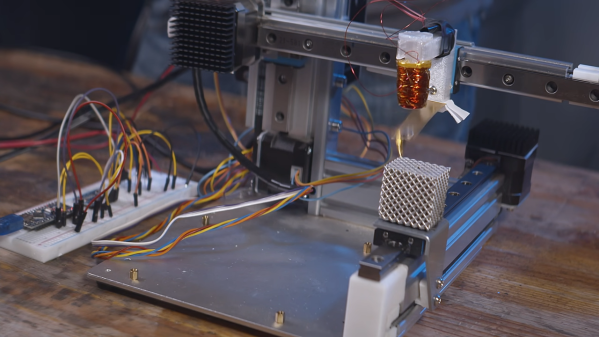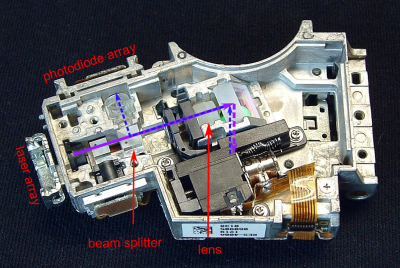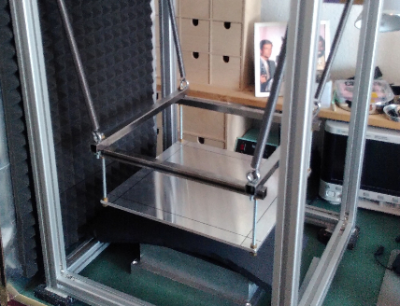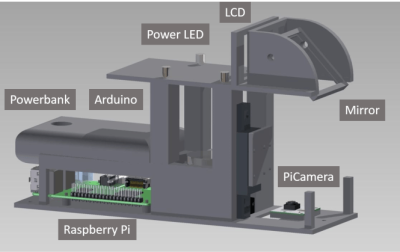Doing it yourself may not get you the most precise lab equipment in the world, but it gets you a hands-on appreciation of the techniques that just can’t be beat. Today’s example of this adage: [Stoppi] built an atomic force microscope out of mostly junk parts and got pretty good results, considering. (Original is in German; read it translated here.)
The traditional AFM setup uses a piezo micromotor to raise and lower the sample into a very, very fine point. When this point deflects, it reads the height from the piezo setup and a motor stage moves on to the next point. Resolution is essentially limited by how fine a point you can make and how precisely you can read from the motion stages. Here, [stoppi]’s motion stage follows the traditional hacker avenue of twin DVD sleds, but instead of a piezo motor, he bounces a laser off of a mirror on top of the point and reads the deflection with a line sensor. It’s a clever and much simpler solution.
 A lot of the learnings here are in the machine build. Custom nichrome and tungsten tips are abandoned in favor of a presumably steel compass tip. The first-draft spring ended up wobbling in the X and Y directions, rather than just moving in the desired Z, so that mechanism got reinforced with aluminum blocks. And finally, the line sensors were easily swamped by the laser’s brightness, so neutral density filters were added to the project.
A lot of the learnings here are in the machine build. Custom nichrome and tungsten tips are abandoned in favor of a presumably steel compass tip. The first-draft spring ended up wobbling in the X and Y directions, rather than just moving in the desired Z, so that mechanism got reinforced with aluminum blocks. And finally, the line sensors were easily swamped by the laser’s brightness, so neutral density filters were added to the project.
The result? A nice side effect of the laser-bouncing-off-of-mirror setup is that the minimum resolvable height can be increased simply by moving the line sensors further and further away from the sample, multiplying the deflection by the baseline. Across his kitchen, [stoppi] is easily able to resolve the 35-um height of a PCB’s copper pour. Not bad for junk bin parts, a point from a crafts store, and a line sensor.
If you want to know how far you can push a home AFM microscope project, check out [Dan Berard]’s absolutely classic hack. And once you have microscope images of every individual atom in the house, you’ll, of course, want to print them out.





















